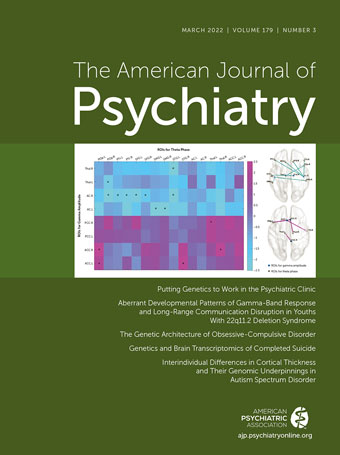In this study design, unrelated case subjects and unaffected control subjects are genotyped using arrays that carry up to a million common variants, known as single-nucleotide polymorphisms (SNPs), spread all over the genome. SNPs are sites in the DNA where two possible variants, or alleles, occur. Association analysis is used to detect alleles that are more or less common in case subjects and may thus alter illness risk. GWASs make no assumptions as to which genes are most important, and in fact most SNPs fall outside the regions of genes that encode proteins. Because so many SNPs are tested, statistical significance needs to be corrected for many independent tests. SNPs found by GWAS usually do not tag specific genes but tend to affect expression of one or more nearby genes, thus providing some level of biological information. GWASs tend to identify common alleles present in at least 20% of the population. Accordingly, the risk conferred by such alleles is low, with odds ratios typically less than 1.2. However, since some patients may carry a large number of risk alleles, taken together the cumulative risk is more substantial, explaining up to 30% of the risk for disease. A large set of SNPs can be used to score genetic risk in independent samples. This polygenic risk score (PRS) is thus a useful metric of individual risk for research purposes, although the PRS alone accounts for a very small proportion of the variance (<2%) and has little predictive value in clinical settings (
1). SNP data can also be used to estimate genetic overlap between different diagnoses, known as genetic correlation, which is useful for studies of nosology, endophenotypes, and genetic architecture (
2).
Over the past 15 years, GWASs have successfully identified hundreds of risk alleles that contribute to many different psychiatric disorders. Currently, more than 145 risk loci have been identified in schizophrenia (
3), 178 in depression (
4), 64 in bipolar disorder (
5), 12 in attention deficit hyperactivity disorder (ADHD) (
6), and several in anxiety disorders (
7). Risk alleles appear to act together in a strictly additive fashion, but individuals at the highest end of the PRS distribution may have substantial risk for disease. For example, individuals whose schizophrenia PRS is near the top of the distribution have a 5- to 15-fold increase in risk of schizophrenia (
8), comparable to the risk conferred by having an affected first-degree relative. Many risk loci are shared across more than one disorder, and substantial genetic correlations exist across diagnostic groups. For example, schizophrenia and bipolar disorder have a genetic correlation close to 80% (
9), which means that at least 64% of risk loci are shared between the disorders. Genetic correlations have also been identified between psychiatric disorders and other traits, such as cognition, sleep patterns, brain anatomy, and substance use disorders (
2,
10). These findings demonstrate that common genetic variation contributes substantially to risk for psychiatric disorders, that genetic risk factors overlap between diagnoses, and that genetic risk can be expressed as a variety of phenotypes, many of which are not considered illnesses.
GWAS methods have also been applied to treatment outcome phenotypes, such as response to antidepressants. Despite high expectations early on (
11), such pharmacogenetic traits have proven to be very challenging genetic targets. Some GWASs have reported genome-wide significant single-marker or polygenic effects (
12–
14), but robust findings have not yet emerged. This may reflect the relatively small samples studied so far, the wide variety of psychopharmacologic agents used, and the complexity of treatment outcome phenotypes. Genetic variants that influence metabolism of many drugs processed by cytochrome P450 enzymes have long been known to affect blood levels and adverse events, and probably explain some poor treatment outcomes (
15), but there is a lack of consistent evidence to support a major role of such variants in treatment response for most psychiatric patients.


